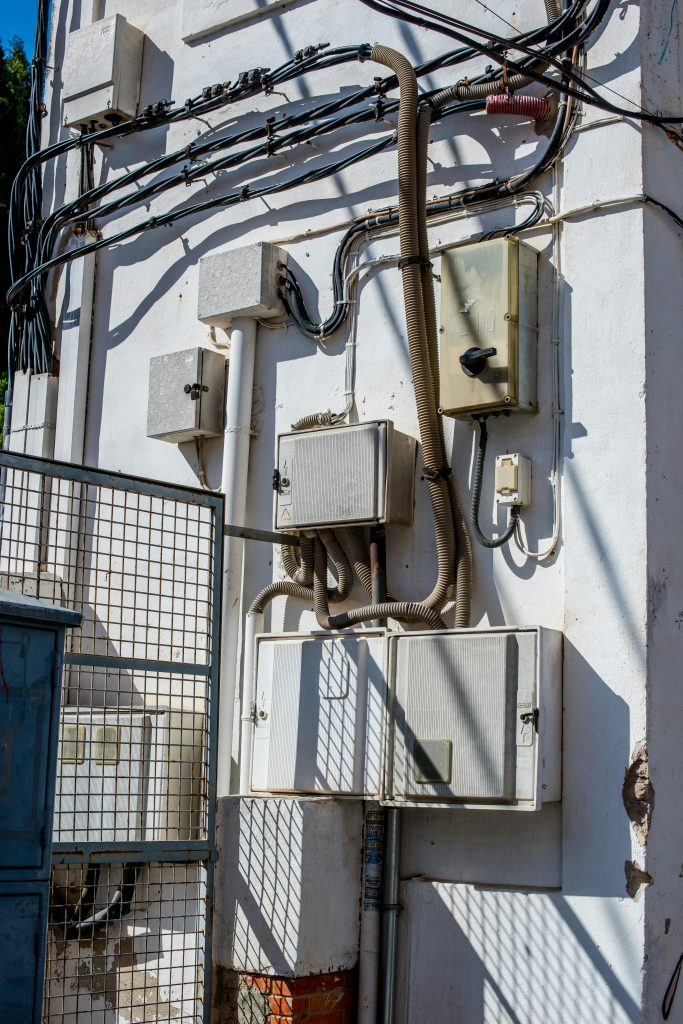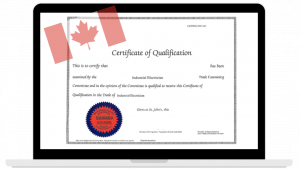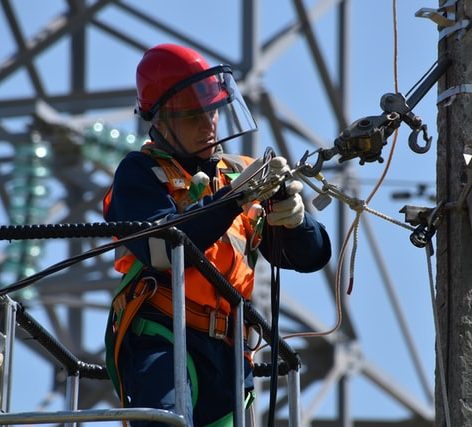Released in March 2024, the new CEC brings about a host of changes to keep up with trends in the electrical industry and to make it easier for contractors to adopt green energy initiatives. It includes loads of new definitions and rules regarding batteries, renewable energies, and electric vehicles.
As we are approaching the date the code comes into effect, we thought we’d summarize all key information into one article for your convenience.
Top 10 changes to the CEC:
If you read only one section of this article, read this one. Here are the key changes to keep in mind for your electrical projects in 2025:
Energy Storage and Renewable Systems:
- Refined requirements for energy storage systems, particularly for dwelling units, removing restrictions on lithium batteries.
- Removed prohibition on lithium battery usage for dwelling units.
- New rules for renewable energy systems, including rapid shutdown options for photovoltaic systems and placement of disconnecting means and inverters.

Pools, Tubs, and Spas:
- Revised bonding requirements to mitigate voltage gradients around pools and portable hot tubs.
- New disconnecting means for improved maintenance safety.
Film, TV Sets, and Traveling Shows:
- GFCI protection extended to extension cords for portable power in damp outdoor areas.
- New color-coding and labeling requirements for safe single-conductor cable use.
Health Care Facilities:
- Mandates tamper-resistant receptacles in areas for child care and diagnostics.
Safer Maintenance:
- Requires updated circuit labeling in panelboards for additions or modifications.
- New arc flash hazard mitigation rules for overcurrent devices rated 1200 A or higher.
Wiring Methods:
- New Subsection for non-metallic jacketed cables, such as TC and LVT types, with dedicated requirements.
- Added rules for cable supports, bonding conductors, and span limits for overhead installations.
Conductors:
- Introduction of a table aligning AWG sizes with IEC metric sizes for easier selection.
- Revised voltage drop calculation methodology for more accurate conductor sizing.
Bonding and Grounding:
- Simplified criteria for grounding AC systems, reintroduced isolated bonding conductors, and clarified bonding for non-electrical equipment like gas piping.
Electric Vehicles:
- Clarification on load calculations when using EV energy management systems; demand for EV supply equipment can be omitted under controlled load.
New Products:
- Requirements for high-voltage couplers in portable power applications.
- New standards for grade-level in-ground enclosures, including use cases based on Class and Tier.
All changes to the CEC by section:
Below you’ll find the complete list of changes to the code:
Section 0 – Definitions
- New Definitions:
- Suite: Defined as a single room or series of rooms under a single tenancy, including dwelling units, guest rooms in motels/hotels, boarding houses, and dormitories.
- Dwelling Unit: Defined as a suite operated as a housekeeping unit with cooking, eating, living, sleeping, and sanitary facilities.
- Industrial Establishment: Defined as a building or part (excluding office or exhibit spaces) where goods are assembled, manufactured, processed, or stored.
- Revised Definitions:
- Cable: Updated to differentiate from “Insulated conductor.”
- Key changes: Added references to Table 19 and bonding conductors.
- Identified: Removed references to the color grey.
- Service, consumer’s: Broadened relevance, particularly where demarcation is administrative.
- Key change: Removed the phrase “point at which connection is made,” acknowledging property boundary as a potential demarcation point.
- Voltage Levels:
- Extra-Low Voltage: Updated from 42.4 V dc to 60 V dc to align with NEC, CE Code, CSA Z462:21, IEC 60950-1, and IEEE 802.3 standards.
- Low Voltage: Updated from 42.4 V dc to 60 V dc and from 1060 V dc to 1500 V dc.
- High Voltage: Updated from 1060 V dc to 1500 V dc to align with CE Code Rule 64-202 5) and industrial control standards (CSA C22.2 NO. 60947-1:22).
- Non-Incendive Circuit: Moved to Section 18 to align with hazardous locations and related wiring practices.
- Cable: Updated to differentiate from “Insulated conductor.”
Section 2 – General Rules
- Rule 2-034 Application of Code Requirements:
- New rule addressing variations in maintenance and regulatory oversight, especially concerning grounding and overcurrent protection.
- Clarifies that Code requirements do not apply to utility-owned infrastructure or substitute supply authority overcurrent protection for Code-required overcurrent protection in installations.
- Consumer auxiliary devices (e.g., a range with a built-in 15 A outlet) cannot substitute Code requirements.
- Rule 2-100 Marking of Equipment:
- Subrule 4: Marking requirements apply throughout the installation’s lifespan.
- Subrule 6: Markings required where conductor ampacity is below the overcurrent device rating.
- Retroactively applies to existing installations, requiring updates for identification markings on circuit modifications.
- Rule 2-306 Shock and Arc Flash Protection:
- New Subrule 3, aligning with NEC Section 240.87, aimed at reducing arc energy exposure and enhancing personnel safety.
- Rule 2-328 Electrical Equipment near Flammable Gas Equipment:
- Updated term “Combustible” to “Flammable” to align with global terminology and Section 18.
- Expanded clearances based on gas type and equipment standards, applicable where gas meters are near electrical equipment or metering (Appendix B).
- Rule 2-400 Enclosures, Boxes, Type Designations, and Use:
- Consolidated enclosure details in Table 65, reducing redundancy.
- Added “Boxes” to include device and octagon boxes.
- Subrule 2: Enclosures without specific marking are for general-purpose indoor use.
- Rule 2-402 Ingress Protection:
- Clarified that Ingress Protection (IP Codes) cannot substitute enclosure types per Rule 2-400 and Table 65.
- Rule 2-404 Marking of Motor Enclosures:
- Expanded motor enclosure marking types to ensure protection appropriate to the environment.
Section 4 – Conductors
- Rule 4-002 Size of Conductors:
- Added Table D18 to show relationships between AWG, kcmil, and IEC (mm²) conductor sizes, aiding selection and harmonization with IEC.
- Rule 4-036 Busbar:
- Amended to relocate busbar ampacity rules from Section 12, creating consistency in ampacity determination.
Section 6 – Service Installations
- Rule 6-302 Installation of Overhead Consumer’s Service Conductors
- Amendment: Item j) now includes Neutral Supported (NS) type cables for consumer service use.
- Rule 6-308 Use of Neutral Conductors in Consumer’s Services
- Amendment: Replaces the term “Bare” with “Conductors.”
- Limits the use of bare neutral conductors to busways or neutral-supported cables, aiming to reduce unintended multi-point grounding with metallic raceways.
- Rule 6-402 Method of Installing Meter Loops
- New Subrule 2) b): Acknowledges product standard CSA C22.2 NO. 115, covering combination meter-mounting devices that incorporate service equipment.
- Previously, a metering device could only be on the line side of a service box if it met current and voltage standards. The 2024 Code now permits multiple-meter devices, common in duplexes and row housing.
Section 8 – Load Calculations
- Rule 8-106 Use of Demand Factors
- Amendment: Specifies that if an electric vehicle energy management system (EVEMS) is in place to prevent overloading, additional demand does not need to be added in load calculations.
- Addresses grid load concerns from electric vehicle charging.
- Rule 8-110 Determination of Areas
- Amendment: Aligns with the National Building Code (NBC), stating that crawl spaces over 1.8 m in height are considered basements, affecting demand calculations.
- Rule 8-202 Apartment and Similar Buildings
- Amendment: Removes Table 38 and specifies that if an EVEMS is not used, vehicle charging demand loads must be added at 100%.
Section 10 – Grounding and Bonding
- Rule 10-004 Special Terminology
- Amendment: Updates the definition for a Solidly grounded system, specifying system connection points and allowing a bonding conductor to serve as a conductive body for grounding in separately derived ac systems (750 V or less).
- Rule 10-206 AC Systems Required to be Solidly Grounded
- Amendment: Clarifies grounding requirements:
- Neutrals must be grounded if distributed from the supply.
- Systems can use impedance grounding or solid grounding depending on the application.
- Key Changes:
- Neutrals do not need grounding only if not distributed from the supply (e.g., 600Y/347 generator delivering only 600 V three-wire loads).
- Neutrals extending from supply equipment must be solidly grounded or impedance grounded.
- Simplified grounding requirements for dwelling units and mandates grounding of extra-low voltage systems in specific cases.
- Revised Rule 10-206 requires careful consideration alongside Rules for Ungrounded Systems (Rule 10-400).
- Amendment: Clarifies grounding requirements:
- Rule 10-400 Ungrounded Systems
- Amendment: States that neutrals may be ungrounded only when they are not distributed.
- Rule 10-604 Bonding Continuity for Service Equipment
- Amendment: Specifies requirements for bonding bushings, mandating them when locknuts are used to secure and bond metallic raceways or cable armor at service equipment.
- Ensures a more substantial bonding path, as supply authority-provided overcurrent devices are often rated higher than the installation.
- Rule 10-612 Installation of Bonding Conductors
- Reintroduction: Isolated bonding, previously omitted in recent editions, is reintroduced in the 2024 edition.
- Rule 10-702 Installation
- New Subrule 3: Recognizes that non-electrical equipment may be bonded to ground through metallic connections.
- Equipotential bonding for electrical equipment, water or gas piping connected to appliances.
- If internal bonding exists, piping can achieve equipotential bonding through the equipment’s bond.
- When using corrugated gas tubing, a bonding jumper is required around the tubing section.
- New Subrule 3: Recognizes that non-electrical equipment may be bonded to ground through metallic connections.
Section 12 – Conductors and Cables
- Rule 12-000 Scope
- Amendment: Defines high voltage as voltages over 1000 V, up from 750 V.
- Rule 12-002 Special Terminology
- New Definition: “Grade level in-ground enclosures” for outdoor junctions or splices, with installation classes in Appendix B Notes.
- Rule 12-012 Underground Installations
- Amendment: Requires burial depth of direct burial conductors (1/0 AWG or larger) per Table 53, aligning with Diagrams D8 to D11.
- Rule 12-102 Installation of Insulated Conductors and Cables
- Amendment: Replaces Table 11 with Tables 11A and 11B for easier identification and maintenance of conductor types.
- Rule 12-116 Termination of Conductors
- Amendment: Recognizes ferrules for fine-stranded conductors, citing CSA standards for safer, more reliable connections.
- Rule 12-304 Location of Insulated Conductors and Cables
- Amendment: Aligns clearance requirements for conductors from pedestrian areas, windows, and doors with Section 6.
- Rule 12-308 Maximum Span of Overhead Conductors
- Amendment: Increases maximum pole span for overhead lines to 40 m.
- Rule 12-318 Overhead Installations
- Amendment: Establishes maximum sag requirements for lines based on span, loading, and temperature. Maximum span for mobile structures is reduced to 10 m.
- Rule 12-320 Messenger Cables
- Amendment: Recognizes NEC-aligned messenger cable assemblies.
- Rules 12-500 to 12-524
- New Rule Series: Governs installations for communication and signaling cables, covering:
- Cable strapping, supports, heater/duct clearances, running boards, stud protection, and fishing of cables.
- New Rule Series: Governs installations for communication and signaling cables, covering:
- Rule 12-510 Running of Cable between Boxes and Fittings
- Amendment: Prohibits sharing holes for different cable types in wood framing.
- Rules 12-550 to 12-576
- Renumbering: Core content remains unchanged, noted by delta symbols.
- Rule 12-608 Continuity of Armoured Cable
- Amendment: Allows relaxed requirements for final load termination using armored cables with non-metallic boxes.
- Rule 12-910 Conductors and Cables in Conduit and Tubing
- Amendment: Removes duplicated Tables 10A-C, with info available in Tables 6A-K.
- Rule 12-3030 Insulated Conductors in Boxes, Cabinets, or Fittings
- Amendment: Allows direct inverter connections with matched alternate power supply to an existing system without separation.

Section 18 – Hazardous Locations
- Rule 18-002 Special Terminology
- Amendment: Updates “dust-protected enclosure” and “uninterrupted” definitions.
- Rule 18-004 Classification of Hazardous Locations
- Amendment: Requires equipment group designation and minimum ignition temperature (AIT) for safe installation in hazardous areas.
- Rule 18-010 Maintenance
- Amendment: Adds “Unused” to indicate that all unused openings must be sealed in hazardous locations.
- Rule 18-052 Marking
- Amendment: Equipment must be rated for all zones it occupies.
- Rule 18-078 Threaded Joints
- Amendment: Consolidates threading requirements into one section to eliminate redundancy.
- Rule 18-102 Wiring Methods, Zone 1
- Amendment: Specifies protective requirements when entering through clearance holes in enclosures.
- Rule 18-150 Equipment, Zone 2 Locations
- Amendment: Recognizes non-sparking, low-power instrumentation without enclosures in Zone 2 due to low heat output.
- Rule 18-206 Luminaires, Zone 21
- New Rule: Adds installation requirements for Class II and Class III luminaires.
- Rule 18-250 Equipment, Zone 22 Locations
- Amendment: Permits dust-protected TEPV/TEFC motors under specific conditions in Zone 22.
Section 20 – Gasoline Dispensing and Aircraft Hangars
- Rule 20-004 Hazardous Areas
- New Subrule 11): Allows relaxed wiring methods beneath Zone 1 and Zone 2 in gasoline stations.
- Rule 20-402 Hazardous Areas
- Amendment: Allows non-metallic raceways in aircraft hangars if adequately buried or encased in concrete.
Section 24 – Patient Care Areas
- Rule 24-102 Panelboards in Patient Care Areas
- New Rule: Specifies secure and accessible panelboard installations.
- Rule 24-104 Circuits in Basic Care Areas
- Amendment: Treats nurse call equipment as a Class 1 circuit; limits single-phase circuits to two wires.
- Rule 24-108 Receptacles in Basic Care Areas
- Amendment: Expands hospital grade and tamper-resistant requirements for receptacles in healthcare areas.
Section 26 – Isolating Switches and Receptacles
- Rule 26-100 Location and Marking of Isolating Switches
- Amendment: Deletes a Subrule on hook stick usage for high voltage switching.
- Rule 26-724 Outdoor and Garage Receptacles
- Amendment: Requires at least two duplex receptacles per single dwelling, spaced apart.
Section 28 – Generators
- Rule 28-900 Rules for Generators
- New Rule: Outlines installation and wiring methods for standby generators.
- Rule 28-902 Working Space
- New Rule: Specifies required working space around generator enclosures.
- Rule 28-904 Conductor Size
- New Rule: Sets minimum conductor ampacity for generator conductors based on overcurrent protection type.
Section 36 – High Voltage Couplers
- Rule 36-002 Special Terminology
- Amendment: Defines “Coupler” for high voltage portable power cables.
- Rules 36-400 to 36-410
- New Rule Series: Covers installation requirements for high voltage couplers.
Section 56 – Optical Fiber Cables
- Rule 56-202 Conductive Optical Fiber Cables
- New Subrule 5): Allows conductive optical fiber cables in raceways for industrial applications.
Section 62 – Electric Heating
- Rule 62-114 Overcurrent Protection and Grouping
- Amendment: Adjusts grouping limits based on location, affecting multi-family buildings.
- Rule 62-118 Demand Factors
- Amendment: Permits but doesn’t require reduced demand factors above 10 kW.
- Rule 62-124 Installation of Series Trace Heater Sets
- Amendment: Limits use of heated leads to suitable fittings and junction boxes.
- Rule 62-130 Heater Controls Near Sinks, Tubs, or Showers
- Amendment: Specifies control distance relative to tub/shower entrance to prevent in-bath usage.
- Rule 62-216 Trace Heater Sets and Heating Panels in Walls/Ceilings
- Amendment: Limits protected heater installations in walls to 1.2 m above floor to prevent accidental penetration.
Section 66 – Temporary Wiring Methods
- Rule 66-400 Wiring Methods
- Amendment: Requires GFCI protection for cord sets supplying 120 V receptacles in temporary setups.
- Rule 66-456 Single-Conductor Cable Connections
- Amendment: Specifies allowable color coding for single-conductor cables based on voltage.
Section 68 – Pools, Spas, and Hot Tubs
- Rule 68-058 Pool Bonding
- Amendment: Requires bonding for all conductive elements near pools within 1.5 m.
- Rule 68-072 Disconnecting Means for Pools, Spas, and Tubs
- New Rule: Requires an emergency shutdown disconnect for maintenance personnel safety.
Section 86 – Electric Vehicle Supply Equipment (EVSE)
- Rule 86-102 Voltages in EVSE Installation
- Amendment: Raises EVSE input voltage limit to 1000 V, with additional voltage output limits based on location.
Tables
- Table 67: Updates clearance requirements for heat trace and heating sets in walls and ceilings.
- Table D3: Provides updated voltage drop calculation methodology, considering factors like conductor type and system phasing.
2024 CEC Implementation Timeline:
Different provinces have announced different target dates to implement the code, here’s a list of announced deadlines:
Alberta: Changes to the CEC will come into effect on the 1st of April 2025 (source)
British Columbia: March 4 2025 (source)
Ontario: May 2025 (source)
FAQs:
When will electricalexams change its content to align with the 2024 CEC?
We are planning on updating the content February 2025.
When will the 2024 electrical code be reflected on the exam material?
This will depend on your province. Check the “2024 CEC Implementation timeline” section to see when your province will update exams.
How can I get free practice questions for the 2025 exam?
Head over to our free membership for some free mock exam questions.
Final Thoughts
As always, we remain available to help guide you through these changes. Our team is available via the chat box in the bottom right corner of the screen or via email, so feel free to shoot us a message if any of these changes isn’t clear.




